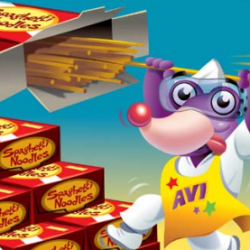Source Institutions
Source Institutions
Add to list Go to activity
Activity link broken? See if it's at the internet archive

In this activity on page 7 of the PDF, learners explore how engineers characterize building materials. Learners test the strength of spaghetti and determine how the number of spaghetti strands affects the strength of a bundle of spaghetti. Use this activity to chemical bonds, mechanical testing, and engineering. Note: The pasta strands can be dipped in water and stuck together to more closely mimic the layers within a piece of plywood. More information about this can be found at the top of page 7, directly underneath the cartoon image. Safety note: Do not eat or drink any of the materials in this activity.
- 5 to 10 minutes
- 10 to 30 minutes
- $1 - $5 per student
- Ages 8 - 14
- Activity, Experiment/Lab Activity
- English, Spanish
Quick Guide
Materials List (per student)
- Small paper cup (4 oz.)
- String
- Pencil
- Raw spaghetti
- Other uncooked pasta (one thinner and one thicker than spaghetti, e.g. angel hair and fettuccini)
- Masking tape
- Metric ruler
- Pennies
Subjects
-
Engineering and Technology
-
Engineering
- Architectural Engineering
- Civil Engineering
- Manufacturing Engineering
- Mechanical Engineering
-
Technology
- Construction
-
Engineering
-
Physical Sciences
-
Chemistry
- Chemical Bonding
-
Motion and Forces
- Gravity
-
States of Matter
- Solids
-
Structure and Properties of Matter
- Atomic Structure
-
Chemistry
-
The Nature of Science
-
The Scientific Process
- Conducting Investigations
- Gathering Data
- Formulating Explanations
- Communicating Results
-
The Scientific Process
Informal Categories
- Food and Cooking
Audience
To use this activity, learners need to:
- see
- read
- touch
Learning styles supported:
- Involves hands-on or lab activities
Other
Foreign language versions of this resource:
Access Rights:
- Free access
By:
- Department of Volunteer Support, American Chemical Society
Rights:
- All rights reserved, American Chemical Society, 2011
